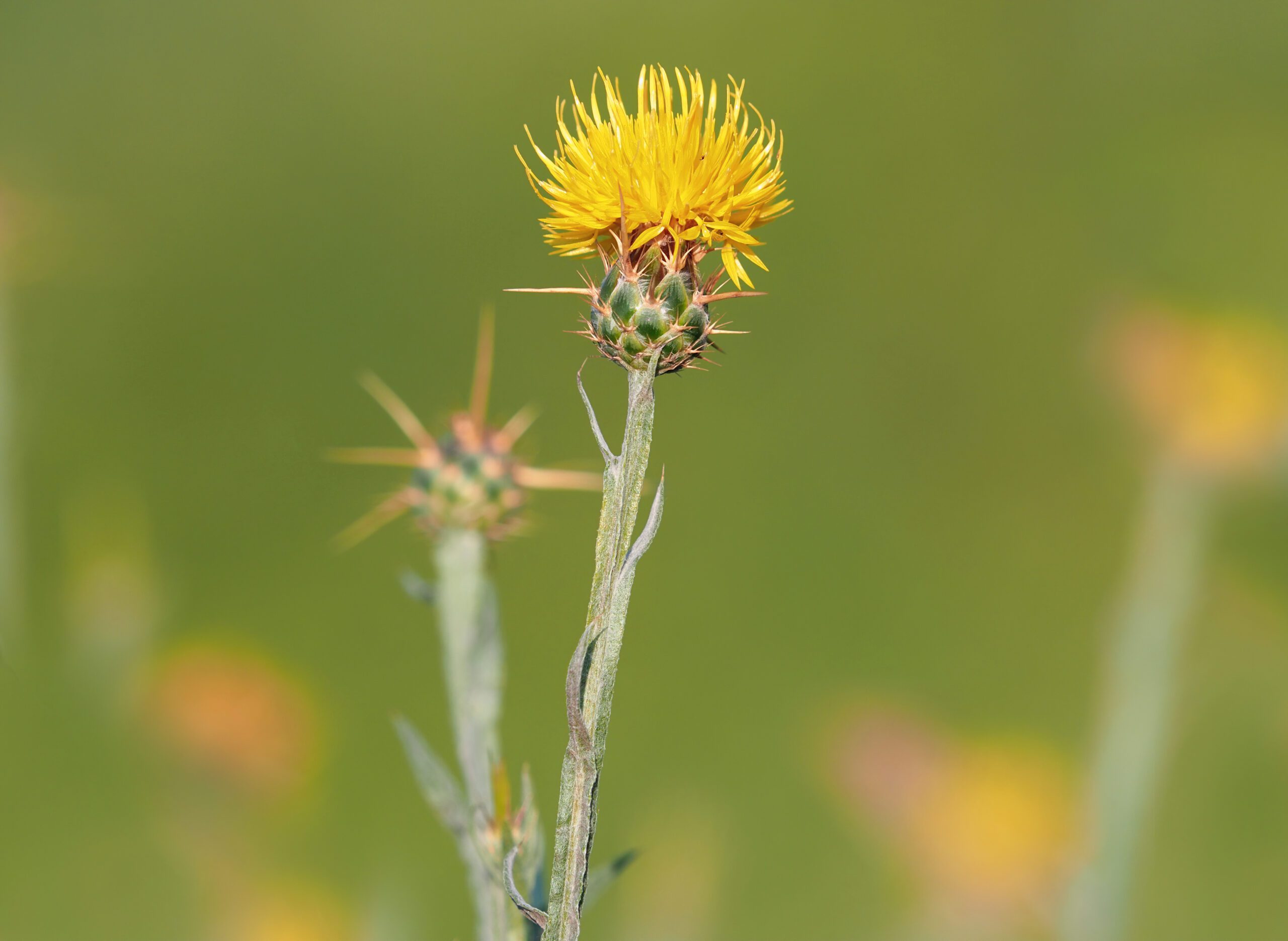How to identify and fight noxious weeds to protect prime habitat
By Benjamin Alva Polley EBS COLUMNIST
This is the second installment in a three-part series on invasive plants. Read my last column to see what is at stake and how invasive species ruin wildlife habitat. In parts two and three, we will explore specific invasive plants and how to manage them.
Rest assured, the best defense against weeds is within your reach.
Start by taking a photo and marking the invasive plant’s location on your GPS unit once you spot it in your yard or the backcountry. Then, contact your county weed district or the local office of the Forest Service, Natural Resources Conservation Service, Bureau of Land Management, or state wildlife agency. These organizations play a crucial role in fighting invasive plant species, and asking to speak to the range management specialist or noxious weed coordinator can provide you with the most relevant and practical guidance. These steps, when taken, can genuinely make a huge difference.
According to Montana State University research, vinegar is an alternative to herbicides when it comes time to fight the weeds.
Skeletonweed
Rush skeletonweed, aptly named for its rapid spread, has gained notoriety as it races across Washington, Oregon, California, Idaho, and now Montana. It poses a significant threat to our ecosystems.
“I feel like I am on top of a dike that springs a leak, and before you know it, I am plugging holes with all ten fingers and ten toes,” says former Bitterroot National Forest ecologist Gil Gail.

This Eurasian native sprouts 20,000 seeds per plant. Like dandelion seeds, they’re built to ride the wind for miles. Skeletonweed has blown deep into the backcountry, far from any trail to places that can be nearly impossible to treat before an area becomes a trash-forage monoculture.
However, there is hope. Agencies, weed districts and groups like Rocky Mountain Elk Foundation are joining forces to stop or at least slow its spread, attacking new infestations before they gain a foothold. Nineteen states are reporting infestations. The most effective treatments are herbicides. Non-toxic methods include spraying vinegar or using biocontrols, which have shown promising results in controlling the spread of these invasive species.
Spotted knapweed
Knapweed hitchhiked with alfalfa seed shipments from Eurasia to America in the 1800s. It now chokes out native plants across the West, grasping the dirt with a stout taproot and injecting its herbicide into the soil to kill off its native neighbors. It jumps on other plants in early spring, then generates flowers and thousands of seeds straight into the fall after most plants have wilted.

Early detection and rapid response are vital in managing invasive plant species. Researchers have counted knapweed infestations with 2 million plants per acre, snuffing native forage so completely that biologists have seen declines in elk, mule deer, moose and pronghorn numbers in hard-hit locations. Yet weevils that attack seeds and roots, combined with repeated annual herbicide treatments, can K.O. knapweed and restore the vitality of infested landscapes. The species has infested 48 states.
Another non-toxic method to kill knapweed includes weevils and vinegar.
Yellow starthistle
Covered in yellow flowers and wicked thorns, this invasive arrived in California as a stowaway from the Mediterranean in the 1850s and quickly spread across five other western states. Starthistle barely needs water to survive and uses drought and wildfire to infiltrate prime wildlife habitats, choking out native plants with impenetrable stands five feet tall.

It’s also poisonous—it paralyzes the lips, tongues and esophagus of livestock and wildlife alike, eventually leading to starvation. People, meanwhile, need chaps to walk through it as starthistle can shred jeans in minutes. Most importantly, anyone tangling with Starthistle on foot or in a vehicle must inspect for seeds. They eagerly cling to fur, hair, or clothing and readily adhere to the tires and undercarriages of vehicles. They also infiltrate hay that is not certified as weed-free.
Forty-one states report infestation. Hairy weevils and biocontrols, as well as herbicides, help control the spread, and hand-pulling and/or using vinegar are the most effective treatments.
Cheatgrass
Cheatgrass is from Europe, Africa and Asia snuck into the U.S. in a wheat shipment in 1861. It’s now found in all 50 states and has overrun over 100 million acres in the West, disrupting and displacing the bunchgrass and sagebrush communities on which thousands of elk and mule deer rely.

Your role in this fight is crucial. By being vigilant and reporting sightings, you can help prevent the further spread of these invasive species. When most plants have barely turned green, cheatgrass is already done growing and is curing to rusty red, arrow-shaped seeds tailor-made to drive pets, livestock, wildlife and sock-wearing humans crazy. It has notoriously shallow roots that deplete soil organics, kill off lichen, fungi and microbes that store water, and slow erosion and stymie wildfire.
By mid-summer, cheatgrass is so combustible that it’s often compared to gasoline. Research shows that the average fire rate in some areas has accelerated from twice per century to almost once a year, and cheatgrass probably has much to do with it. However, there is hope. A bacterium native to North America that weakens cheatgrass root systems and allows native plants to compete has been greenlighted by regulators and is now being tested as a bio-herbicidal spray. Here’s hoping it proves lethal to cheat.
Benjamin Alva Polley is a place-based storyteller with stories published in Adventure Journal, Audubon, Esquire, Field & Stream, The Guardian, Outside, Popular Science, Sierra, and other publications on his website. He holds a master’s in Environmental Science and Natural Resource Journalism from the University of Montana.













